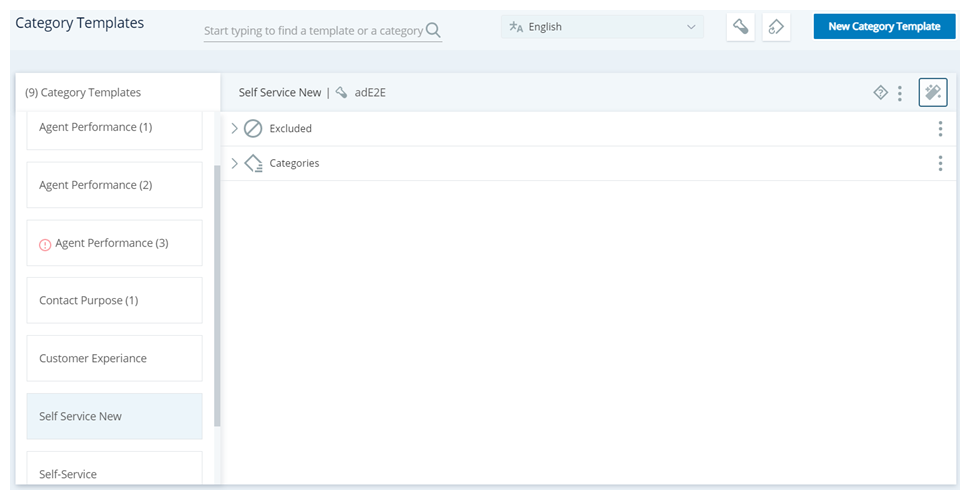When you create a new dataset![]() Set of parsed interaction transcripts that spans a specific period of time and match your specified filter criteria., you have the option to select a category template
Set of parsed interaction transcripts that spans a specific period of time and match your specified filter criteria., you have the option to select a category template![]() Category groupings that help you use the data for a specific purpose. Out-of-the-box category templates include Intent to Buy and Risk Aversion. to apply to the dataset. This controls the types of data that appear in the workspace
Category groupings that help you use the data for a specific purpose. Out-of-the-box category templates include Intent to Buy and Risk Aversion. to apply to the dataset. This controls the types of data that appear in the workspace![]() Named view of one or more widgets.. If you select a category template, you can open the category editor and modify the category configuration for that dataset. You can merge, split, delete, and add new categories
Named view of one or more widgets.. If you select a category template, you can open the category editor and modify the category configuration for that dataset. You can merge, split, delete, and add new categories![]() Data groups that Interaction Analytics uses for parsed call transcript data. They make it easier to find trends. . You can also modify the category rules that dictate which interactions fall into the category.
Data groups that Interaction Analytics uses for parsed call transcript data. They make it easier to find trends. . You can also modify the category rules that dictate which interactions fall into the category.
Once the category template has been applied to a dataset, any changes you make to categories are unique to that dataset. The category template itself remains unchanged. Likewise, any changes you make to the category template don't affect the dataset. This is similar to a presentation that you've applied a template or theme to. Once you apply a category template to a dataset, it becomes part of that dataset and is distinct from the template.
Key Facts About Categories
-
If your company has Interaction Analytics for more than one language, you must select a language before you can do any work with categories
 Data groups that Interaction Analytics uses for parsed call transcript data. They make it easier to find trends. in a template or dataset.
Data groups that Interaction Analytics uses for parsed call transcript data. They make it easier to find trends. in a template or dataset. - You can modify the categories of an individual dataset
 Set of parsed interaction transcripts that spans a specific period of time and match your specified filter criteria. that has a category template applied to it. The changes affect only that dataset.
Set of parsed interaction transcripts that spans a specific period of time and match your specified filter criteria. that has a category template applied to it. The changes affect only that dataset. - You can pull in a sample set of interactions to see how the current categories are working. This helps you see how your changes affect the sample data before you apply those changes to a category template
 Category groupings that help you use the data for a specific purpose. Out-of-the-box category templates include Intent to Buy and Risk Aversion..
Category groupings that help you use the data for a specific purpose. Out-of-the-box category templates include Intent to Buy and Risk Aversion.. - You can delete categories and groups from the dataset category tree. When you delete a category folder, you also delete its contents. You cannot retrieve deleted categories or groups.


